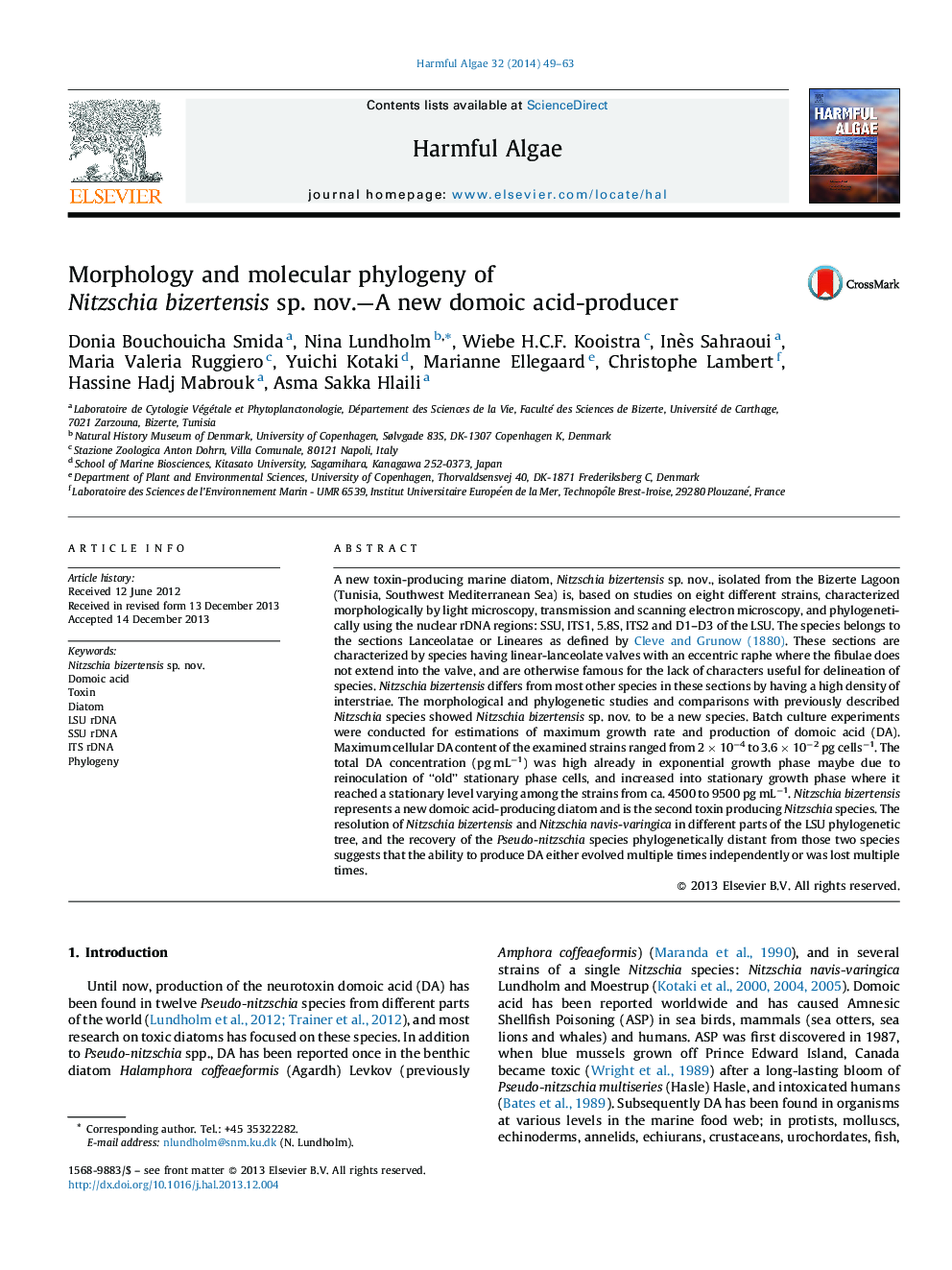| کد مقاله | کد نشریه | سال انتشار | مقاله انگلیسی | نسخه تمام متن |
|---|---|---|---|---|
| 4545372 | 1626939 | 2014 | 15 صفحه PDF | دانلود رایگان |

• We report the discovery of the second Nitzschia species found to produce ASP toxins.
• The species is new to science and is described as Nitzschia bizertensis sp. nov.
• The species is not closely related to the other known toxic Nitzschia species.
• Production of ASP toxins may have evolved or lost multiple times during evolution, or many unknown toxin producing diatoms exist.
A new toxin-producing marine diatom, Nitzschia bizertensis sp. nov., isolated from the Bizerte Lagoon (Tunisia, Southwest Mediterranean Sea) is, based on studies on eight different strains, characterized morphologically by light microscopy, transmission and scanning electron microscopy, and phylogenetically using the nuclear rDNA regions: SSU, ITS1, 5.8S, ITS2 and D1–D3 of the LSU. The species belongs to the sections Lanceolatae or Lineares as defined by Cleve and Grunow (1880). These sections are characterized by species having linear-lanceolate valves with an eccentric raphe where the fibulae does not extend into the valve, and are otherwise famous for the lack of characters useful for delineation of species. Nitzschia bizertensis differs from most other species in these sections by having a high density of interstriae. The morphological and phylogenetic studies and comparisons with previously described Nitzschia species showed Nitzschia bizertensis sp. nov. to be a new species. Batch culture experiments were conducted for estimations of maximum growth rate and production of domoic acid (DA). Maximum cellular DA content of the examined strains ranged from 2 × 10−4 to 3.6 × 10−2 pg cells−1. The total DA concentration (pg mL−1) was high already in exponential growth phase maybe due to reinoculation of “old” stationary phase cells, and increased into stationary growth phase where it reached a stationary level varying among the strains from ca. 4500 to 9500 pg mL−1. Nitzschia bizertensis represents a new domoic acid-producing diatom and is the second toxin producing Nitzschia species. The resolution of Nitzschia bizertensis and Nitzschia navis-varingica in different parts of the LSU phylogenetic tree, and the recovery of the Pseudo-nitzschia species phylogenetically distant from those two species suggests that the ability to produce DA either evolved multiple times independently or was lost multiple times.
Journal: Harmful Algae - Volume 32, February 2014, Pages 49–63